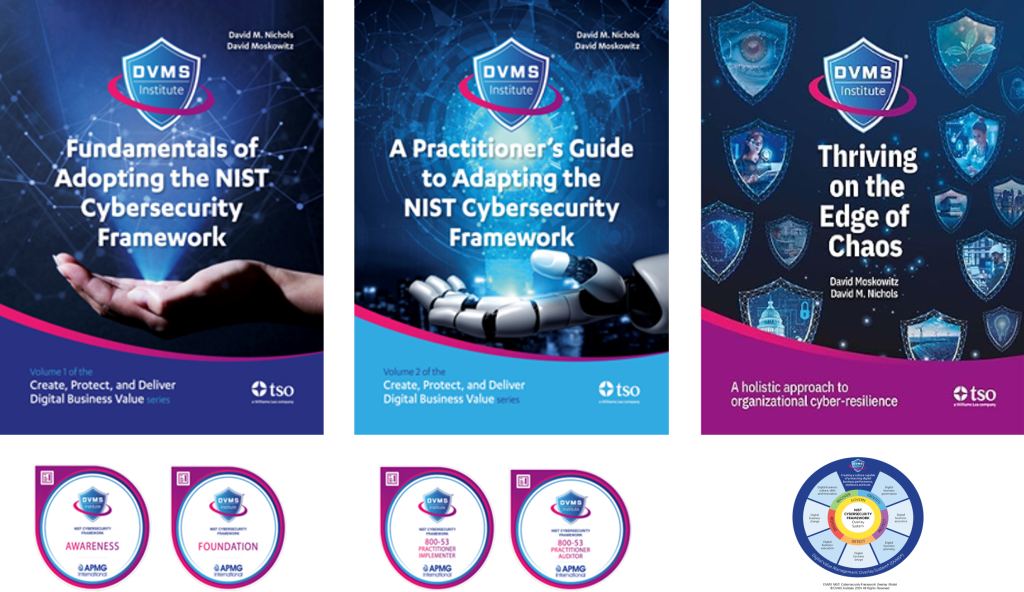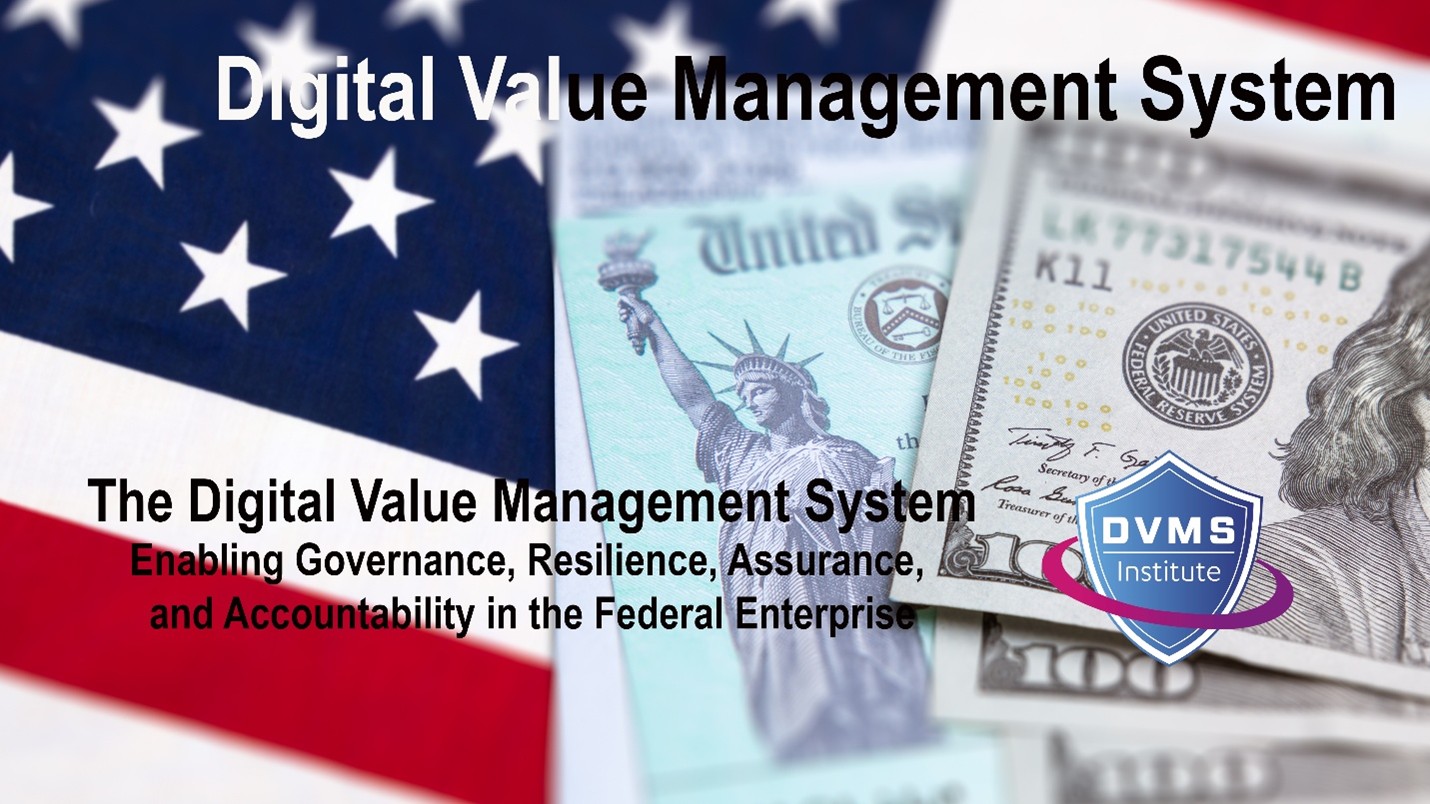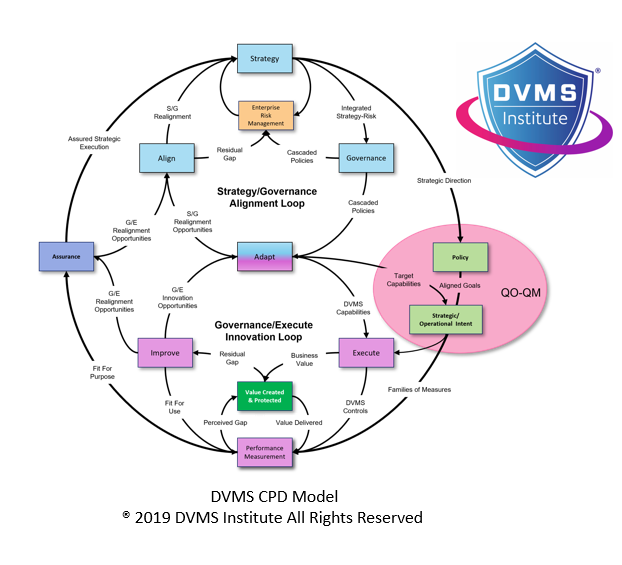Gain Resilience by Design – A DVMS FastTrack Approach to Governance, Risk, and Assurance
David Nichols – Co-Founder and Executive Director of the DVMS Institute
If you are standing still, you are losing!
Your world is increasingly dominated by complexity and volatility, and resilience is no longer a trait you can develop reactively. It must be embedded by design—baked into the DNA of how your organization operates, learns, and evolves. For those navigating the intersection of governance, risk, and assurance (GRA), the DVMS FastTrack approach provides a structured, high-velocity on-ramp to becoming not just reactive to disruption, but generative, adaptive, and transformationally resilient.
Let’s examine the concept of “gaining resilience by design” and how a concentrated approach through phased MVC practice deployment, cultural diagnostics, and outcome validation can transform the GRA function into a proactive enabler of digital business value.
Why Resilience by Design Matters in the GRA Landscape
Governance, risk, and assurance functions have long been tasked with protecting the organization, ensuring compliance, reducing exposure, and verifying outcomes. But in today’s fast-moving digital economy, this traditional posture is inadequate. GRA must evolve from oversight to foresight.
Resilience by design means building adaptive capacity—not just in systems and processes but also in people, culture, and governance structures. It ensures that instead of scrambling to respond to threats, your organization anticipates them, adapts in real time, and uses disruption as a catalyst for innovation.
But how do we operationalize resilience in the GRA space? Through the DVMS FastTrack approach and the structured application of Minimum Viable Capabilities (MVC), organizations can rapidly assess, prioritize, and deploy the capabilities needed to Create, Protect, and Deliver (CPD) digital business value, while remaining compliant, trustworthy, and aligned with strategic intent.
Phased MVC Practice Deployment – Velocity Without Chaos
Deploying the full set of GRA-related capabilities across an enterprise is not a one-and-done initiative—it’s a journey. The DVMS FastTrack approach recognizes this reality and advocates for phased MVC deployment, which enables rapid but controlled progress.
What Are MVC in the DVMS Context?
Minimum Viable Capabilities are not “check-the-box” control items—they are practice-based competencies required to:
- Create digital business value with integrity,
- Protect it from loss, theft, or degradation,
- Deliver it to stakeholders with traceability and transparency.
From a GRA perspective, this includes practices like:
- Assurance mapping to digital workflows,
- Risk-informed governance routines,
- Continual control validation, and
- Feedback loops that inform strategic governance adjustments.
The Phased Approach
FastTrack recommends deploying MVCs in four focused phases:
Phase 0 – Readiness Assessment: Before the First Step (getting ready to get ready)
Before any new capabilities are deployed, FastTrack requires a candid look at where the organization currently stands—strategically, structurally, and culturally. Phase 0 focuses on:
- Surfacing key digital business workflows critical to value delivery and at risk.
- Conducting cultural diagnostics to assess trust, transparency, and learning orientation.
- Mapping existing capability maturity using models like DVCMM.
- Identifying leverage points where small changes will yield significant system-wide impact.
This phase ensures that what follows is not just motion but intelligent movement, aligned to the business context and cultural readiness.
- Phase 1 – Foundational Practices: Establish core GRA-related workflows aligned to digital business value streams.
- Phase 2 – Adaptive Governance: Deploy real-time monitoring, continuous assurance, and responsive risk management.
- Phase 3 – Optimization and Scaling: Integrate insights from assurance validation into enterprise performance and innovation planning.
Each phase builds organizational momentum while ensuring that complexity is managed, not multiplied.
Cultural Diagnostics: Surfacing the Invisible Barriers
Resilience is as much about culture as it is about controls. Without an enabling culture, even the most well-designed MVCs will fail to take root. That’s why cultural diagnostics are critical to gaining resilience through design.
What We Diagnose
DVMS FastTrack tools include cultural heat maps and behavioral readiness assessments that examine:
- Leadership alignment with resilience goals,
- Frontline trust in governance and assurance mechanisms,
- Behavioral norms around risk, experimentation, and learning.
This isn’t soft science—it’s strategic data. Culture diagnostics illuminate:
- Why risk signals are ignored,
- Why assurance findings don’t drive change,
- Why governance frameworks remain ornamental.
How GRA Gains from Cultural Insight
GRA teams are often seen as enforcers rather than enablers. But with cultural insights, they can pivot:
- From issuing mandates to facilitating change,
- From policing compliance to nurturing learning,
- From control-centric to trust-centric engagement.
By understanding the cultural impedance to resilience, GRA functions can become architects of adaptation rather than custodians of rigidity.
Outcome Validation: From Activity to Impact
Many organizations confuse activity with progress. They report GRA metrics like the number of audits conducted, risks logged, or issues remediated. But these are outputs, not outcomes.
Outcome validation is the practice of linking GRA actions directly to business value and resilience impact.
What to Validate
FastTrack equips teams to validate whether:
- Risk treatments reduce loss events,
- Controls demonstrably protect critical assets,
- Governance decisions result in improved business performance.
This moves GRA reporting from backward-looking compliance to forward-looking assurance, giving leadership confidence that investments in resilience are paying off.
Using QO-QM Thinking
The DVMS approach incorporates Question Outcome (QO) and Question Metric (QM) logic, ensuring that GRA efforts are framed by questions that matter:
- Are we protecting the digital workflows that matter most?
- Are we adapting faster than the threats we face?
- Are our controls supporting or strangling innovation?
Validated outcomes are your proof points that resilience is real, not rhetorical.
How DVMS FastTrack Operationalizes This Model
The DVMS FastTrack approach is not a rebranding exercise—it’s an operational accelerator. It enables organizations to rapidly:
- Assess current GRA maturity using outcome-focused benchmarks,
- Prioritize MVCs that align with mission-critical workflows,
- Deploy practices in a low-friction, high-impact manner,
- Track cultural and operational indicators that signal resilience uptake,
- Validate that governance decisions yield measurable business outcomes.
This is not a theoretical exercise; the DVMS FastTrack is grounded in a stabilize, optimize, and improve approach, reflecting principles long embedded in ITSM practices and the Deming Plan-Do-Check-Adjust (PDCA) cycle that underpins effective service and capability management. Through focused enablement, FastTrack helps GRA leaders become co-creators of digital business value—respected for their insight, not just their oversight.
GRA as a Strategic Enabler, Not a Compliance Obstacle
Too often, governance and assurance are perceived as bureaucratic necessities—slow-moving checkpoints that constrain innovation in the name of control. But when properly designed and integrated, GRA—Governance, Resilience, and Assurance—functions as a force multiplier. It provides guardrails and the structural confidence to act boldly in uncertain environments.
- Governance defines the why, aligning decision rights, accountability, and strategic intent to organizational purpose.
- Resilience defines how it builds the capacity to anticipate, absorb, adapt, and accelerate through disruption.
- Assurance defines what now—it supplies the feedback and validation needed to confirm that systems, behaviors, and controls deliver value and perform as intended.
When embedded by design, GRA doesn’t merely reduce risk—it enables velocity with trust. It transforms uncertainty into a condition for learning, governance into a platform for agility, and assurance into a catalyst for continual improvement. In short, GRA becomes a strategic enabler—not just of compliance, but of confidence, coordination, and competitive advantage.
The Call to Action: Build Forward, Not Backward
Resilience is not built by bolting on more compliance. It’s designed through intentional choices:
- To deploy what’s essential, not what’s traditional.
- To listen to culture, not dictate from policy.
- To validate outcomes, not just perform rituals.
The DVMS FastTrack pathway, grounded in the MVC and the CPD Model logic, gives GRA leaders a practical framework to embed these choices.
If you’re a board member, risk officer, compliance leader, or assurance professional, your relevance depends on your ability to become a resilience architect rather than just a control steward.
Final Thought
The next disruption is not a question of if, but when. The real issue is whether your governance, risk, and assurance practices will become rigid under pressure or adapt flexibly. Building resilience into your operations is your competitive advantage, and DVMS FastTrack can help speed up that process.
Let’s position Governance, Risk, and Assurance (GRA) as the foundation of trust, agility, and value, achieving one phase, insight, and validated outcome at a time.
About the Author

Dave is the Executive Director of the DVMS Institute.
Dave spent his “formative years” on US Navy submarines. There, he learned complex systems, functioning in high-performance teams, and what it takes to be an exceptional leader. He took those skills into civilian life and built a successful career leading high-performance teams in software development and information service delivery.
In today’s digitally driven economy, cyber disruptions are no longer an “if” but a “when.”
The DVMS Institute’s Certified Training Programs teach organizations the skills to build a Holistic and Culture-Aligned System capable of coordinating Adaptive, Cyber Operations Governance, Resilience, and Assurance across a Complex Digital Ecosystem.
Achieving true cyber resilience across a complex digital ecosystem requires seamless alignment between organizational Strategy, Governance, and Operations, underpinned by a culture dedicated to sustaining and continuously innovating organizational digital value.

The DVMS positions cyber resilience as a strategic, enterprise-wide capability powered by the Institute’s CPD, Z-X, and 3D Knowledge models.
This systems-based approach to cyber operational resilience demands active engagement from all members of the Digital Ecosystem, with each member playing a distinct role in proactively identifying and mitigating the systemic risks that threaten digital business operations.
This adaptive, forward-looking approach to Governance, Resilience, and Assurance (GRA) positions businesses to:
- Maintain Operational Stability Amidst Constant Digital Disruption
- Drive Agility and Trust Across Your Digital Ecosystem
- Satisfy Critical Regulatory and Certification Requirements
- Leverage Cyber Resilience as a Competitive Advantage
DVMS Explainer Videos
- Architecture Video: David Moskowitz explains the DVMS System
- Case Study Video: Dr. Joseph Baugh Shares His DVMS Story.
- Overlay Model – What is an Overlay Model
- ZX Model – The MVC’s that power operational resilience
- CPD Model – Adaptable governance and assurance
- 3D Knowledge Model – Enabling holistic organizational learning
- FastTrack Model – A phased approach to cyber resilience
Digital Value Management System® is a registered trademark of the DVMS Institute LLC.
® DVMS Institute 2025 All Rights Reserved




